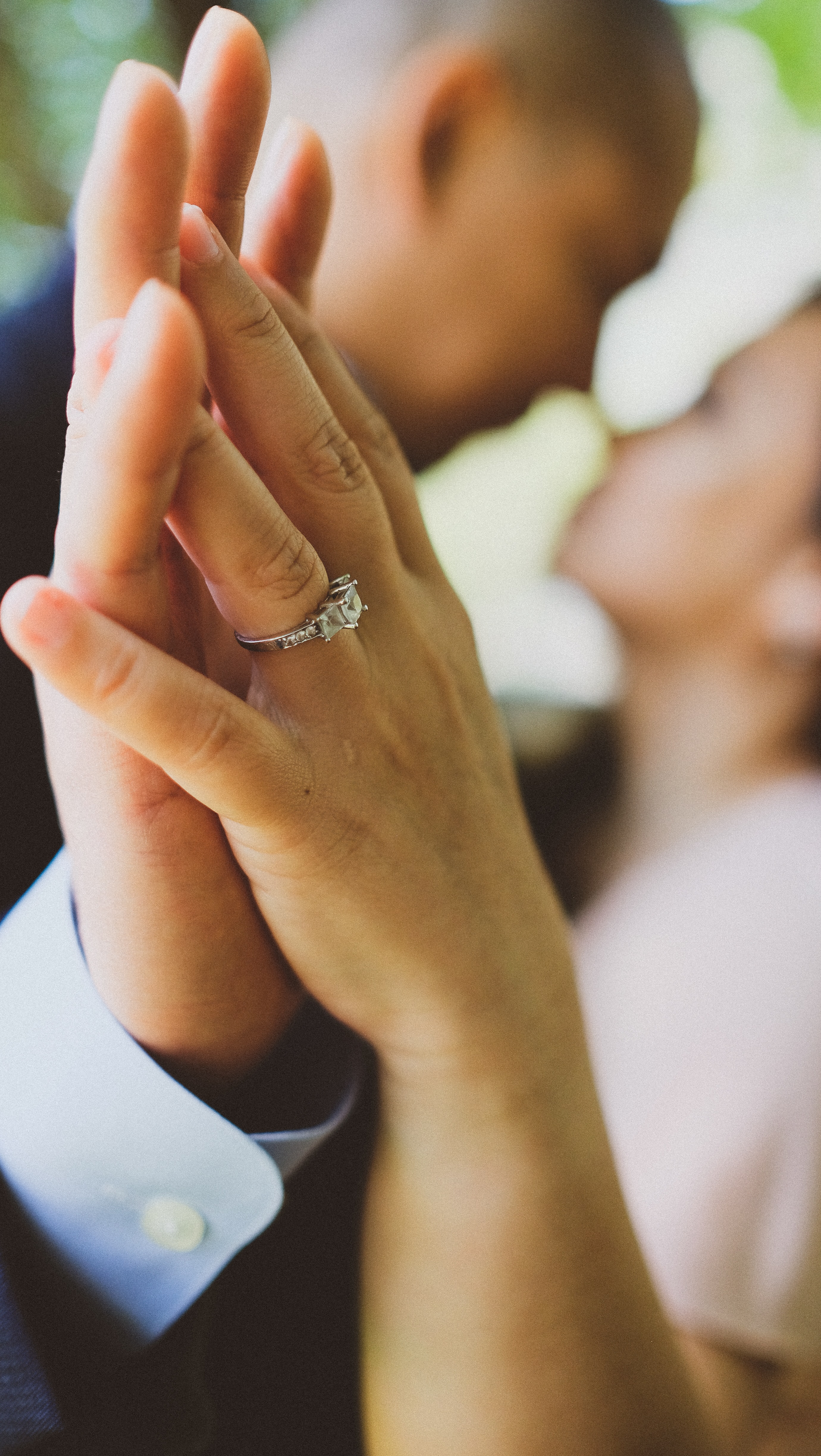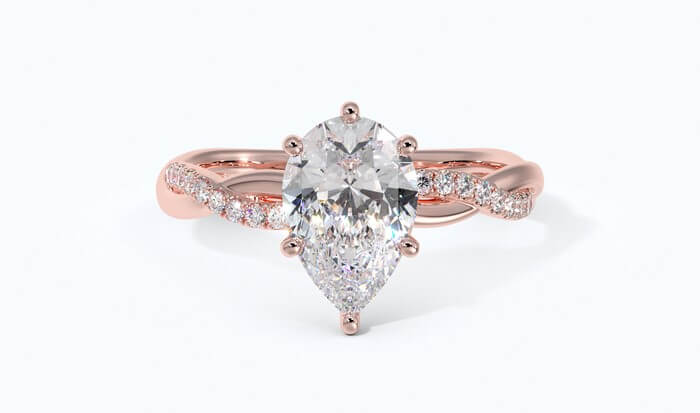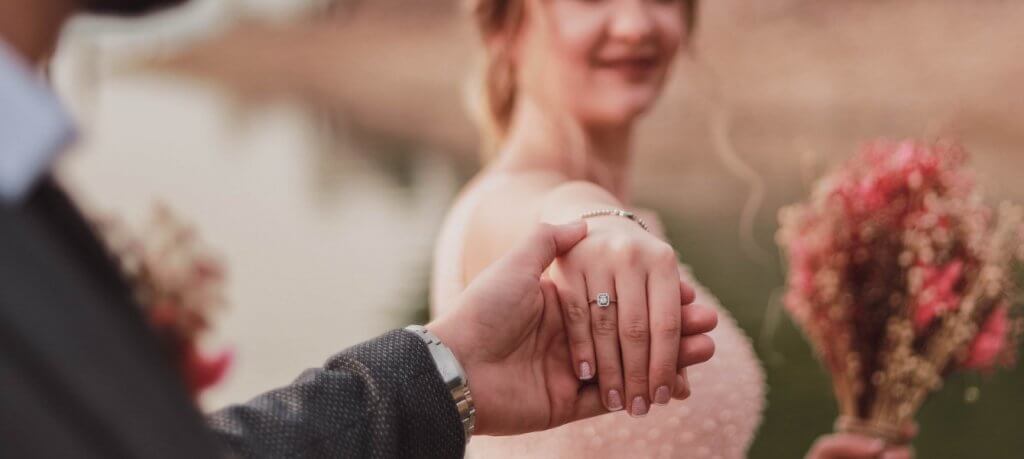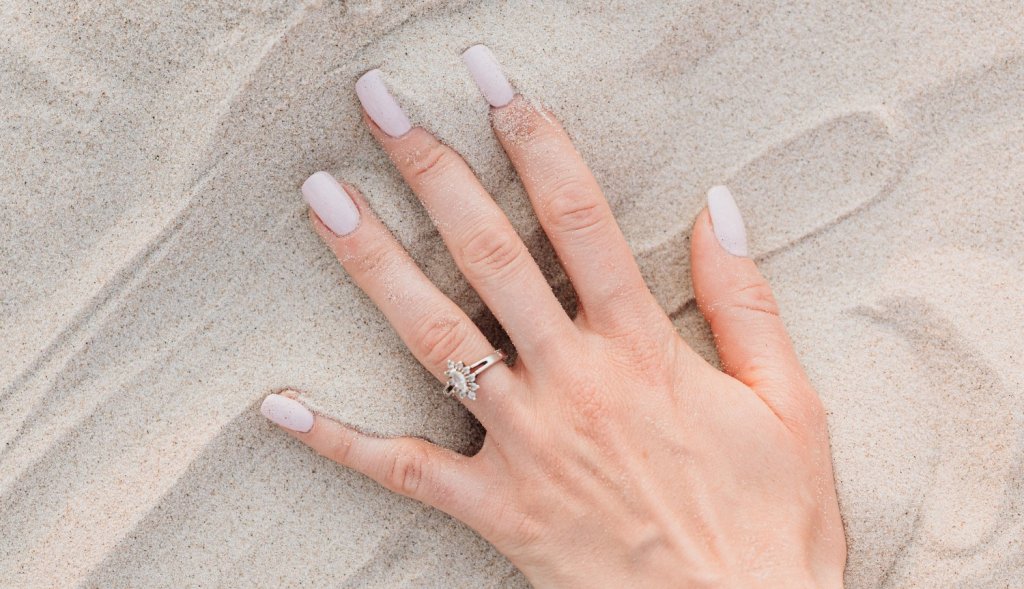Vintage Engagement Rings: The Complete Guide
Key Takeaways
- Antique engagement rings are beautiful family heirlooms – or, alternately, exciting finds in antique stores.
- There are plenty of different styles of ring from history. For instance, the ornate and floral designs of the late Victorian period are easily distinguished from the geometric Art Deco styles of the 1920s and 30s.
- Many antique rings will have been made using pretty different methods and tools. For this reason, they may not live up to expectations, even if they have that history behind them.
- One of the key issues with antique rings is the diamond cut. Cuts have evolved significantly over the last century, and older diamonds are lacking the sparkle and precision of modern diamonds.
- You might find better results working with your jeweler to create a vintage-inspired ring from scratch.

When it comes to engagement rings, history is pretty hard to shake – not that most of us would want to turn our backs on it entirely. Some of the most popular designs at the jewelry stores today feature styles and design elements that are considered classics within the jewelry world.
Take the most traditional shape of all: the classic solitaire diamond setting. This familiar shape has been worn on the fingers of women around the world for more than five hundred years.
Alternatively, look at the far more contemporary looking flush setting engagement ring – a style first created in Victorian England, but travelling nobles looking to conceal their jewels.
In other words, every style popularized today has its own backstory and, often, that backstory branches far back into history. We do, however, mean something much more specific when we talk about vintage engagement rings…
What is Considered a Vintage Engagement Ring?
A vintage engagement ring may be one that is genuinely old – older than around fifty years – or one that is intentionally designed to resemble an antique.
The term ‘vintage’ is pretty subjective. In all likelihood, most people searching for vintage engagement rings these days will be looking for new rings designed according to older and more traditional styles. This might mean the romantic filigree and intricate borders of a ring inspired by Victorian tastes, or the stylized geometrics and sunrays of the 1920’s Art Deco period.
These two examples are great for demonstrating how broad the term ‘vintage’ really is. It covers almost every style imaginable, and gives the jeweler the scope to use all those features in one ring, or design something that is most subtly inspired by one of history’s trends.
Conversely, there are genuine antiques. These rings may be from the mid-century or earlier and, in all likelihood, will be second hand. Some couples value the long and largely unknown histories behind these rings – and, of course, the craftsmanship that went into them.
There is definitely something romantic about presenting your bride-to-be with a piece of history, whether real or simply inspired, but, just like any diamond ring buyer, there’s a few things you should know first.
- Antique Engagement Rings
- How Old Does a Ring Have to be in Order to be Antique?
- Are Antique Rings Worth it?
- Are Vintage Diamonds Better?
- Vintage Engagement Ring Settings
- What is the Most Classic Diamond Cut?
- What is the Most Classic Engagement Ring Style?
- How Much Does a Vintage Diamond Ring Cost?
Antique Engagement Rings
Whether you’re a history buff or an old romantic at heart, there is no denying the allure of a genuine antique.
How Old Does a Ring Have to be in Order to be Antique?
Some say one hundred years, while others take a more relaxed approach and say anything older than fifty years should be considered an antique.
A well-made ring is designed to be worn for many, many years – enough that it may be passed down through the generations, if the original wearer chooses. While antique engagement rings are common, they are far more commonly kept within families.
Many jewelers will, however, feature a small collection of antique engagement rings.
Are Antique Rings Worth it?
Maybe, but maybe not. While these rings are high quality, the methods behind them differ from what we expect jewelers to do today.
If you’ve been seduced by the idea of helping to continue a ring’s legacy, and becoming a part of its long history, then it can be pretty hard to shake that off for anything. However, a genuine antique does present its own challenges.
For starters, it may be worn or slightly damaged in some way. Well-crafted rings are strong and durable, but decades of wear will inevitably begin to show. Some TLC from a good jeweler can go a long way, but it’s important to prepare for this possibility in order to avoid disappointment.
More importantly, these rings were created using tools and techniques that, over the years, jewelers have been able to build on, improve, hone and perfect. For instance, the art of diamond cutting has been in continuous development for centuries, meaning that there is a lot of difference between a diamond cut fifty or a hundred years ago, and a diamond cut today…
Are Vintage Diamonds Better?
On the whole, no. Old diamonds are intrinsically tied to old methods. While they offer fascinating snapshots of history, they do not often live up to modern expectations.
Today, the edges are cleaner, the facets are more symmetrical, and, most importantly, the diamonds are cut far more strategically so as to maximize clarity, whereas older diamonds tend to feature more inclusions and blemishes that, on the whole, the modern buyer would rather not pay to see.
Modern diamonds are cut to sparkle as much as possible, which means that most modern buyers risk being disappointed by an antique diamond. And, while the craftsmanship and skill behind an antique ring setting is bound to be breathtaking, we all know that the diamond is the focal point – one that can’t be ignored.
Can you resize an antique ring?
Yes, provided the ring’s design doesn’t make it impossible for the jeweler to resize the band without causing issues for symmetry, or the ring’s structural integrity.
As with any piece of jewelry, you’ll want to make sure the jeweler you’re working with has a lot of experience, and a strong reputation in the local community.
If the ring’s band is plain, then resizing it should be relatively simple. Keep in mind that, as a rule of thumb, a jeweler can only add or remove around two ring sizes. If the size difference is more significant than that, then redesigning a new setting may be the only option – your jeweler will be the best person to give advice in this instance.
If the shank features any intricate design work – such as filigree or pavé – then the process of resizing it becomes a lot more complicated. Removing a section of the band – or adding extra metal into it – can disrupt the design, ruin the ring’s symmetry, and cause lasting damage.
A good jeweler won’t get far enough into the process to cause lasting damage, but it’s important to manage your own expectations before you head into the store.

Vintage Engagement Ring Settings
These styles offer the ideal compromise between traditional design and era-specific detailing, and modern techniques and tools which ensure the perfect finish for your ring.
What is the Most Classic Diamond Cut?
The round cut has been a staple of the world of fine jewelry for hundreds of years, but keep in mind that it may not be the most era-specific.
Each diamond cut has its own fascinating history. The round cut was created by an academic in 17th century London, looking to find ‘mathematical perfection’, and has endured as the most popular cut for many, many generations of brides and grooms.
Still, other cuts are highly evocative of particular periods. The emerald cut, while centuries old, rose to prominence in the mid-century, with Princess Grace Kelly of Monaco’s famous engagement ring now representing an entire era.
Alternatively, the more intricate cushion cut diamond represents a living memory of the much, much older ‘mine cut’ diamond, highly coveted throughout the 17th and 18th century.
Each diamond cut has the power to call to mind a specific point in history, particularly when it is placed within a classic engagement ring setting. Investing in a new diamond, however, means that you will be able to take advantage of modern tools and techniques that ensure a perfect cut that lasts many generations to come.
What is a Classic Engagement Ring Setting?
The solitaire diamond, featuring a round cut and a gold band, is intrinsically tied to the history of the engagement ring. Still, some more ornate touches from your jeweler can place your engagement ring more definitively within a certain point in history.
Vintage engagement rings tend to be incredibly intricate. This twisted pavé yellow gold engagement ring, for instance, turns the shank of the ring into its own focal point. Coupled with the marquise cut diamond (commissioned by King Louis XV in the 1700s), the ring alludes to that 18th century brand of decadence that stands as the total opposite to today’s more minimalist styles
If you’re looking to adopt the more geometric patterns of the 1920s and 1930s, then consider many smaller, emerald cut diamonds housed in a channel setting.
Alternatively, talk to your jeweler about the more antiquated techniques, such as filigree, which can be used to create highly complex and floral shapes along the shank.
Still, as we mentioned above, nothing will ever unseat the classic, plain design of a solitaire diamond on a plain band. This is an excellent choice if your bride-to-be is traditional, but more interested in keeping things simple and not era-specific.
Diamonds have been beguiling us for hundreds of years; keeping it simple and making your engagement ring all about the diamond is about as classic as it gets.

How Much Does a Vintage Diamond Ring Cost?
Anywhere from around $5,000 to much, much more. A vintage diamond ring will likely require a custom design, which can come at a higher cost from your jeweler – a cost that is more than worthwhile when you walk away with a unique and beautiful ring.
Jewelers are as creative as they are precise, and any reputable craftsman will be eager to hear your ideas and work out a design that blends together your hand-picked elements to turn your vision into a reality.
Working out how much money you should spend on your engagement ring is a pretty personal decision, but the two most important factors to consider are the diamond, and the level of craftsmanship that will go into your setting. Larger diamonds come at a premium, and so does the time spent by your jeweler, so aim to be realistic from the start.
The cost of genuine antiques will generally be higher than the sum of their parts, as they are one-off pieces that are prized for their historical and sentimental value, as much as their individual parts. For some, this additional cost is more than worthwhile – but, if you’re looking to make the most out of your budget, then we’d always recommend investing in a new diamond cut according to modern techniques, and a setting created by a local jeweler. That way, you can create your own piece of history.

Mar 17, 2022 By Willyou.net
Pear Shaped Diamond Ring Settings: The Complete Guide

Mar 17, 2022 By Willyou.net
Square Halo Engagement Rings: The Complete Guide








